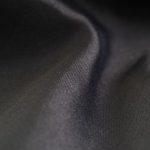When you think about protecting your fabrics and surfaces, Scotchgard might come to mind as a go-to solution. However, it's crucial to understand that it isn't a magic bullet. You might not realize that its protective barrier weakens over time and that not all materials are suitable for treatment. Plus, despite its reputation, Scotchgard doesn't guarantee total stain resistance. So, what does this mean for your cleaning routine and fabric care? The answers might surprise you as we explore the nuances of effective fabric protection.
Table of Contents
Key Takeaways
- Scotchgard requires periodic reapplication, as its effectiveness diminishes over time and with frequent use.
- It does not guarantee complete stain resistance; regular cleaning is still necessary.
- Scotchgard is not suitable for all fabrics, especially delicate materials like silk and wool.
- The protective barrier may not prevent all types of stains, particularly oils and harsh chemicals.
What Is Scotchgard?
Scotchgard is a protective treatment that helps repel stains and spills from fabrics and surfaces. When you apply it, you're adding a barrier that keeps your upholstery, carpets, and even clothing looking cleaner for longer. This treatment is particularly popular among homeowners and renters alike, as it can significantly reduce the frequency of deep cleaning and maintenance. You'll find Scotchgard useful in areas with heavy foot traffic or where pets and kids are present.
The application process is simple. You can either spray it yourself or have a professional do it for you. Once it's on, it creates an invisible shield that prevents liquids from soaking in. This means that when an accidental spill occurs, you'll have a much easier time blotting it up before it sets in.
However, it's important to note that Scotchgard isn't a magic solution. While it does provide a protective layer, it doesn't make your fabrics completely stain-proof. Over time and with heavy use, its effectiveness can diminish, requiring reapplication. Understanding these limitations can help you manage your expectations and maintain your fabrics better.
How Scotchgard Works
By forming a protective barrier on surfaces, Scotchgard repels liquids and stains, making it easier for you to clean up spills before they set in. This protective coating works by creating a micro-layer that prevents substances from penetrating the fabric or material. The active ingredients in Scotchgard bond with the fibers, allowing water and oil-based spills to bead up instead of soaking in.
When you apply Scotchgard, you're essentially giving your items an added layer of defense. The treatment doesn't change the look or feel of the fabric, so you can maintain the aesthetic you love while enhancing its durability. It's crucial to apply it evenly and allow the product to dry completely for maximum effectiveness.
Another key aspect of how Scotchgard works is its ability to resist fading caused by sunlight, which helps maintain the vibrant colors of your fabrics. However, keep in mind that while Scotchgard is effective, it's not a permanent solution. Over time, the protective barrier can wear down, so regular reapplication is essential to ensure lasting protection.
This way, you can keep your surfaces looking great and extend their lifespan significantly.
Types of Fabrics and Surfaces
When applying Scotchgard, you need to consider the types of fabrics and surfaces it works best on.
Some materials respond well to the protection it offers, while others may face compatibility issues.
Knowing what's suitable can save you time and ensure your items stay protected.
Suitable Fabric Types
Certain fabrics and surfaces can benefit significantly from Scotchgard, enhancing their resistance to stains and spills. For instance, upholstery fabrics like cotton, polyester, and certain blends are excellent candidates for treatment. These materials can absorb Scotchgard well, which helps create a protective barrier without altering their appearance or feel.
When it comes to carpets and rugs, synthetic fibers, such as nylon and olefin, often respond favorably to Scotchgard. These types of fabrics can repel liquids effectively, making them easier to clean when accidents happen.
You should also consider using Scotchgard on outdoor fabrics, like canvas, which can withstand the elements while remaining stain-resistant. Sunbrella and similar materials are designed for outdoor use and can maintain their vibrant colors when treated.
However, you'll want to avoid using Scotchgard on delicate fabrics, such as silk or wool, as these may not hold up well under the treatment. Always check the manufacturer's recommendations before applying Scotchgard to ensure you're protecting your investment without compromising the integrity of the fabric.
Surface Compatibility Issues
While some fabrics benefit from Scotchgard, not all materials are compatible with its protective properties, which can lead to issues if applied incorrectly.
For instance, natural fibers like cotton and wool generally respond well, but synthetic fabrics like nylon and polyester can present challenges. You might find that Scotchgard doesn't adhere properly to these surfaces, resulting in uneven protection and potential damage.
Additionally, delicate fabrics such as silk and suede are particularly sensitive. Applying Scotchgard can alter their texture or color, leaving you with a less-than-desirable outcome. Before using the product, it's crucial to check the manufacturer's guidelines for your specific fabric.
Furthermore, surfaces like leather can react unpredictably. While some leather items might tolerate Scotchgard, others could develop stains or discoloration. Always test a small, inconspicuous area first to ensure compatibility.
Common Misconceptions
When using Scotchgard, you might think it makes your surfaces completely stainproof, but that's a common misconception.
It's important to understand that its effectiveness has limitations and it won't last forever.
Knowing these points can help you manage your expectations and maintain your items better.
Not a Stainproof Solution
Many people mistakenly believe that Scotchgard guarantees complete stain resistance on fabrics and surfaces. However, it's crucial to understand the limitations of this product. While Scotchgard does provide a level of protection against spills and dirt, it isn't a foolproof solution.
Here are some common misconceptions:
- Total Protection: Scotchgard doesn't make your fabrics or surfaces stainproof. It helps repel liquids, but it won't completely prevent stains.
- No Cleaning Required: Just because you've treated your fabric doesn't mean you can skip regular cleaning. Dirt and grime can still accumulate over time.
- Works on All Materials: Some materials, like untreated fabrics or certain leathers, may not respond well to Scotchgard, limiting its effectiveness.
- Permanent Solution: The protection isn't permanent. Over time and with repeated cleanings, the effectiveness can diminish.
Thanks to these misconceptions, you might find yourself disappointed after relying solely on Scotchgard for complete stain resistance. Understanding what it can truly do will help you maintain your fabrics better and manage expectations.
Limited Longevity and Effectiveness
Even with its protective qualities, Scotchgard's effects can diminish over time, leading to misconceptions about its longevity and overall effectiveness. Many people assume that once you've applied Scotchgard, your fabric is permanently shielded from stains and spills. This simply isn't the case. The truth is that the protective barrier can wear off due to factors like regular use, washing, and exposure to sunlight.
You might think a single application will keep your upholstery looking pristine indefinitely, but it's important to remember that Scotchgard needs reapplication. Depending on the fabric and usage, you may need to refresh the treatment every six months to a year. This can be especially true for high-traffic areas where wear and tear are more pronounced.
Additionally, some users expect Scotchgard to repel all types of stains. While it does offer some level of protection, it can't guarantee complete stain resistance. Understanding these limitations helps you set realistic expectations and take proactive steps to maintain your fabrics.
Regular maintenance and timely reapplications ensure you get the most out of Scotchgard's protective qualities.
Limitations of Scotchgard
Recognizing the limitations of Scotchgard is essential for making informed decisions about fabric protection. While it's a popular choice for repelling stains and water, it's not a catch-all solution. Here are some key limitations you should know:
- Not Permanent: Scotchgard wears off over time, especially after washing or heavy use. You'll need to reapply it periodically to maintain its effectiveness.
- Limited Protection: It may not protect against all types of stains or damage. Certain liquids, like oils or harsh chemicals, can still penetrate the fabric despite treatment.
- Surface Only: Scotchgard primarily works on the surface of the fabric. Deep-set stains or wear and tear won't be prevented by the treatment.
- Potential for Discoloration: In some cases, Scotchgard can cause discoloration or damage to certain fabrics, particularly delicate materials. Always test a small area first.
Best Practices for Use
To get the most out of Scotchgard, it's important to follow best practices during application and maintenance. Start by ensuring the surface is clean and dry before application. This helps the product bond effectively, enhancing its protective qualities.
When applying Scotchgard, use a well-ventilated area and hold the can 6-12 inches from the surface for even coverage. Don't rush the process; allow each coat to dry completely before applying another. This can prevent clumping and ensure a smooth finish.
For maintenance, regularly check the treated surfaces for signs of wear or damage. Reapply Scotchgard as needed, especially on high-traffic areas or items exposed to moisture. Remember, Scotchgard isn't a permanent solution and will require periodic reapplication to maintain its effectiveness.
Here's a quick reference table to help you remember these best practices:
| Step | Action | Frequency |
|---|---|---|
| Preparation | Clean and dry the surface | Before application |
| Application | Apply evenly, in layers | As needed |
| Maintenance | Inspect for wear | Monthly |
| Reapplication | Redo as necessary | Every few months |
Frequently Asked Questions
Can Scotchgard Be Used on Leather Items?
You can use Scotchgard on leather items, but be cautious. Always test a small, hidden area first to ensure it doesn't alter the color or texture. Proper application helps protect against stains and moisture.
How Often Should I Reapply Scotchgard?
You should reapply Scotchgard every six months to a year, depending on usage and exposure. Regularly check for signs of wear, and reapply sooner if you notice water no longer beading on the surface.
Does Scotchgard Change the Texture of Fabrics?
Scotchgard can slightly alter the texture of fabrics, making them feel stiffer or more coated initially. However, most users find the change minimal, and the benefits of protection often outweigh any minor texture differences.
Is Scotchgard Safe for Pets and Children?
Yes, Scotchgard is generally safe for pets and children once it's fully dried. However, you should always follow the manufacturer's guidelines and ensure proper ventilation during application to minimize any potential risks.
Can Scotchgard Protect Against All Types of Stains?
Scotchgard can help protect against many stains, but it isn't foolproof. It works best on water-based spills and might not be as effective against oil-based or set-in stains, so you should always test first.
- Jaclyn Smith Fabric Coconut: a Review of This Rayon/Polyester Blend - June 29, 2025
- Jaclyn Smith Fabric Coconut: a Review of This Rayon/Polyester Blend - June 29, 2025
- How to Get Coconut Oil off Fabric Without Washing - June 29, 2025







